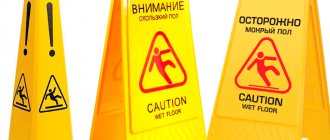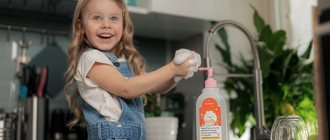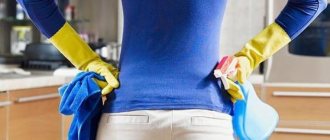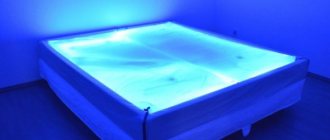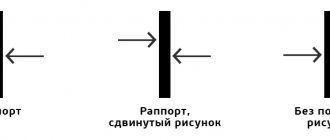The work of nurses in a hospital includes mandatory knowledge of the rules, as well as the ability to carry out wet cleaning in the wards. Not only the cleanliness of the premises, but also the condition of the medical facility from the point of view of epidemiological standards depends on the skill of the sanitary staff.
You can listen to this article in full on our podcast:
In inpatient hospital settings there is a constant risk of infection and the spread of various infections among patients and medical staff.
To prevent such a situation, sanitary workers must know how often to clean the wards and the rules for its implementation.
Features of wet cleaning
Compliance with sanitary standards plays a vital role in the work of a hospital. If they are disturbed, pathogenic bacteria can enter a favorable environment for reproduction. For example, thanks to wet cleaning of rooms, you can get rid of dust. And it is known to contain many bacteria that cause diseases.
A special feature of cleaning in medical institutions is the use of special disinfectants.
Wet cleaning of rooms should be carried out at least twice a day. The first time - before 9 am, so that the ward is prepared for the doctor’s rounds. Evening is the best time for the second cleaning. Because the visit to patients is over, there are no strangers, and it is possible to thoroughly disinfect the room.
Gloves and special uniform are required when wet cleaning rooms.
Periodicity
According to accepted standards, daily cleaning is carried out at least 2 times a day (the first in the morning before 9 o’clock, the second from 4 to 6 o’clock).
The sanitary schedule can be adjusted based on the general epidemiological situation in the region.
How not to use disinfectants
Solutions and tools
A special block is allocated for storing cleaning equipment in hospitals. All tools are used strictly for their intended purpose and are stored in a special room. Items should be numbered, indicating rooms and types of work, or color-coded. It is usually stored in a block along with the tools.
Most often, when wet cleaning rooms, disinfectants are used, which are produced in the form of a concentrated solution. To use them, you need to dilute them with water in accordance with the universal table, which can be found in the instructions for each product. It indicates the mixing proportions of the working solution, and what concentration is needed to process things under different modes. The table is stored in the same block as the rest of the inventory.
The concentration of the solution during disinfection is observed according to the regime in force in the medical institution. Rooms with different regimes have their own means of disinfection and cleaning. For example, in rooms with bacterial diseases, a less concentrated solution is used than for viral diseases.
When mixing compounds, be sure to protect your hands by wearing gloves.
In addition to modern disinfectant concentrates, you can use products prepared independently:
- 0.5% solution of soda and soap. 25 grams of planed soap and 25 grams of soda are diluted in water (11 liters).
- Special agent "Chloramine". 500 grams of the composition are diluted in water (11 l.).
- Composition of peroxide. A 6% solution with 0.5% detergent composition is diluted in water (11 l.).
- For mold, use “Lizorin.” 25 ml of the composition is diluted in water (11 liters).
There is a special list of disinfectants officially approved by the Department of State Sanitary and Epidemiological Surveillance for use in hospitals. They must meet the following requirements:
- Kill bacteria, viruses, fungi. At room temperature, inhibit infection activity.
- Maintain the appearance of furniture, floors, and things.
- Possess not only disinfectant properties, but also cleaning properties.
- Do not harm the human body, be low-toxic.
- The products must pass fire safety specifications.
A new solution is prepared for each room. After completion of work, it is disposed of. It is impossible to allow several rooms to be cleaned with the same solution.
Frequency guidance algorithm
Various medical documents regulate not only the types of cleaning in health care facilities, but also the order of their implementation. Preliminary, current and final cleaning are carried out according to similar algorithms, while general cleaning has its own order and tasks.
We recommend: Chemical analysis of air for the presence of harmful substances
Current cleaning
Since some authors classify preliminary and final cleaning as current, it is advisable to consider their order in a general block.
Algorithm for current or wet cleaning:
- put on special change of clothes;
- the premises are inspected to determine the scope of work;
- disinfectant solutions are prepared;
- the sink is cleaned;
- moisten the baseboards with appropriately marked rags;
- the walls are wiped to a height of about two meters, which corresponds to the height of a person with an outstretched arm;
- then the window sills and heating radiators with pipes are wetted;
- use a damp cloth to treat the furniture from top to bottom, but not all the way to the floor, but 5 cm above;
- after this, all furniture is disinfected;
- The floor is washed with a special mop using a disinfectant solution;
- quartzing is turned on for a time determined depending on the size of the room and the passport of the lamp itself;
- cleaning equipment is disinfected and rinsed in plenty of running water, it is thoroughly dried and stored in a clean container.
During any cleaning, it is very important not to confuse rags and equipment and use them only for certain surfaces. If this rule is violated, all efforts to disinfect premises are reduced to zero.
spring-cleaning
No matter how thoroughly the routine wet cleaning is carried out, it is still necessary to periodically clean hard-to-reach areas using effective disinfectants . General cleaning is carried out according to its own order and schedule , it requires a lot of effort.
The evening before, all rags that will be used are washed. Directly on the day of cleaning, it is necessary to remove all contents from cabinets, bedside tables and shelves, and also move furniture away from the walls. Medical staff wear special clothing and use personal protective equipment.
A detergent with disinfectant properties is being prepared. Cleaning products are used to treat sinks and existing ceramic surfaces. Skirting boards are treated using a brush, after which the disinfectant composition is washed off with a special rag.
We recommend: Environmental protection in the enterprise and production
The ceiling is wetted with the prepared solution; a mop with a long handle is used for this.
The same mop is used to process the walls from top to bottom. Then all furniture is washed, starting from horizontal surfaces and up to the legs. Batteries and radiators are processed using a brush. The floor is washed with a special disinfectant solution. At the final stage, the bactericidal lamp is turned on and quartzed according to the passport.
The room is kept closed for one hour, and then thoroughly ventilated and the remaining disinfectants are washed off. It is very important that all surfaces are wiped dry. At the end of the day, cleaning equipment is disinfected, rinsed, dried and sent to a special place for storage until the next cleaning. Any type of restoration of order in medical institutions must be carried out carefully. After all, this helps to minimize the number of germs and also reduce the risk of cross-contamination of both patients and medical staff.
Cleaning according to SanPiN
Medical institutions have sanitary and epidemiological requirements approved by the chief state sanitary doctor and the SanPiN resolution. In accordance with the document, all activities related to the activities of hospitals are carried out, including wet cleaning of wards.
Instructions for cleaning personnel are carried out at least once a year. The organization and control of the passage remains with the LGO administration. Sanitary standards and technologies change quite often. And employees must be informed in a timely manner.
First, patients must be warned that the room will be cleaned. The orderly or nurse puts on:
- special clothing used only when cleaning (robe, cap, oilcloth apron);
- specialized shoes;
- gloves.
Inspects the ward, prepares disinfectant solutions separately for furniture and flooring.
The technique for wet cleaning of wards is also prescribed in the resolution:
- Ventilate the room while cleaning. If there are bedridden patients in the ward, wrap them in a blanket. Patients who are able to stand should leave the room.
- Wipe bedside tables and check their contents (perishable food should be refrigerated) - the first thing medical personnel should do.
- Then wipe the dust from the window sills, wash handles and other furniture from top to bottom, without touching the floor.
- Wash the floor with a diluted solution using a special mop from the wall and window to the doorway.
- Place trash in the hallway.
- Depending on the specifics of the wards, bactericidal lamps are turned on for the appropriate time
Containers with disinfectants are well closed and indicated:
- if there are no labels, write down the name of the product;
- level of concentration, purpose;
- date of preparation and expiration date.
For each product, it is necessary to provide storage conditions that meet the requirements.
RULES FOR GENERAL CLEANING IN AN ICU
General sanitization in the intensive care unit wards is carried out weekly and after patients are discharged. During cleaning you must follow certain rules:
- all work is carried out only in special clothing;
- wards should be cleared of medical instruments and medications;
- any processing of all surfaces is carried out from top to bottom (in the order of “ceiling, windows, window sills, walls, doors, furniture and equipment”);
- disinfection and washing of floors is carried out in the direction from the far corners to the exit;
- after the final ultraviolet irradiation, the room must be ventilated;
- All equipment is kept in a disinfectant solution for an hour and only then washed and dried.
Wet cleaning schedule
Healthcare units should have written cleaning schedules.
How often wet cleaning of wards should be carried out is prescribed in the SanPiN regulations. It is usually carried out at least twice a day. If necessary or under special conditions - more often.
Cleaning and quartzing schedules for each area are planned, written, signed, approved and posted. They indicate the time and object of cleaning, the name of the orderly or nurse. Where one or the other puts his painting at the end of the work.
ALGORITHM FOR PROCESSING INTENSIVE CARE ROOMS DURING GENERAL CLEANING
To carry out general cleaning in the intensive care unit, a clear procedure has been developed:
- prepare the necessary solutions and equipment;
- put on overalls;
- move furniture and large equipment away from the walls;
- Apply disinfectant solution to all surfaces using clean napkins;
- turn on the UV lamps for 60 minutes (the door is closed and a sign is posted warning about exposure);
- change a dirty set of overalls to another;
- wash off the disinfectant solution from all surfaces with tap water and sterile wipes;
- turn on the bactericidal lamp again (30-minute exposure);
- ventilate the room;
- process inventory;
- take off your overalls.
A SIMPLE AND EFFECTIVE WAY TO CARRY OUT GENERAL CLEANING OF AN ICU
“General assistant” in intensive care is a difficult and responsible job, which, moreover, takes a lot of time from the department’s nurses. Meanwhile, there is a more convenient solution - order professional deep cleaning of intensive care wards from a cleaning agency. Thanks to the qualifications of our employees, the availability of powerful equipment and modern means, the premises will be cleaned faster and more efficiently. Your medical staff will be busy only with their main responsibility - saving the lives of patients. For quality cleaning services, contact us - we guarantee compliance with all cleaning requirements and standards.

